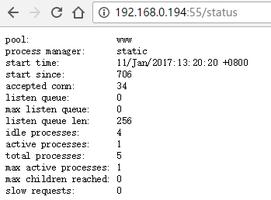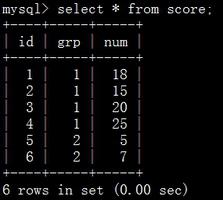如何在 PyTorch 中对张量的元素进行排序?
要在 PyTorch 中对张量的元素进行排序,我们可以使用方法。此方法返回两个张量。第一个张量是具有元素排序值的张量,第二个张量是原始张量中元素索引的张量。我们可以按行和列计算二维张量。torch.sort()
脚步
导入所需的库。在以下所有 Python 示例中,所需的 Python 库是torch。确保您已经安装了它。
创建一个 PyTorch 张量并打印它。
要对上面创建的张量的元素进行排序,请计算。将此值分配给一个新变量"v" 。这里,输入是输入张量,dim是元素排序的维度。对元素按行排序,dim 设置为 1,按列对元素排序,dim设置为 0。torch.sort(input, dim)
具有排序值的张量可以作为v[0]访问,排序元素的索引张量作为v[1] 访问。
打印带有排序值的张量和带有排序值索引的张量。
示例 1
以下 Python 程序展示了如何对一维张量的元素进行排序。
# Python program to sort elements of a tensor输出结果# import necessary library
import torch
# Create a tensor
T = torch.Tensor([2.334,4.433,-4.33,-0.433,5, 4.443])
print("Original Tensor:\n", T)
# sort the tensor T
# it sorts the tensor in ascending order
v = torch.sort(T)
# print(v)
# print tensor of sorted value
print("Tensor with sorted value:\n", v[0])
# print indices of sorted value
print("Indices of sorted value:\n", v[1])
Original Tensor:tensor([ 2.3340, 4.4330, -4.3300, -0.4330, 5.0000, 4.4430])
Tensor with sorted value:
tensor([-4.3300, -0.4330, 2.3340, 4.4330, 4.4430, 5.0000])
Indices of sorted value:
tensor([2, 3, 0, 1, 5, 4])
示例 2
以下 Python 程序显示了如何对 2D 张量的元素进行排序。
# Python program to sort elements of a 2-D tensor输出结果# import the library
import torch
# Create a 2-D tensor
T = torch.Tensor([[2,3,-32],
[43,4,-53],
[4,37,-4],
[3,-75,34]])
print("Original Tensor:\n", T)
# sort tensor T
# it sorts the tensor in ascending order
v = torch.sort(T)
# print(v)
# print tensor of sorted value
print("Tensor with sorted value:\n", v[0])
# print indices of sorted value
print("Indices of sorted value:\n", v[1])
print("Sort tensor Column-wise")
v = torch.sort(T, 0)
# print(v)
# print tensor of sorted value
print("Tensor with sorted value:\n", v[0])
# print indices of sorted value
print("Indices of sorted value:\n", v[1])
print("Sort tensor Row-wise")
v = torch.sort(T, 1)
# print(v)
# print tensor of sorted value
print("Tensor with sorted value:\n", v[0])
# print indices of sorted value
print("Indices of sorted value:\n", v[1])
Original Tensor:tensor([[ 2., 3., -32.],
[ 43., 4., -53.],
[ 4., 37., -4.],
[ 3., -75., 34.]])
Tensor with sorted value:
tensor([[-32., 2., 3.],
[-53., 4., 43.],
[ -4., 4., 37.],
[-75., 3., 34.]])
Indices of sorted value:
tensor([[2, 0, 1],
[2, 1, 0],
[2, 0, 1],
[1, 0, 2]])
Sort tensor Column-wise
Tensor with sorted value:
tensor([[ 2., -75., -53.],
[ 3., 3., -32.],
[ 4., 4., -4.],
[ 43., 37., 34.]])
Indices of sorted value:
tensor([[0, 3, 1],
[3, 0, 0],
[2, 1, 2],
[1, 2, 3]])
Sort tensor Row-wise
Tensor with sorted value:
tensor([[-32., 2., 3.],
[-53., 4., 43.],
[ -4., 4., 37.],
[-75., 3., 34.]])
Indices of sorted value:
tensor([[2, 0, 1],
[2, 1, 0],
[2, 0, 1],
[1, 0, 2]])
以上是 如何在 PyTorch 中对张量的元素进行排序? 的全部内容, 来源链接: utcz.com/z/359950.html








